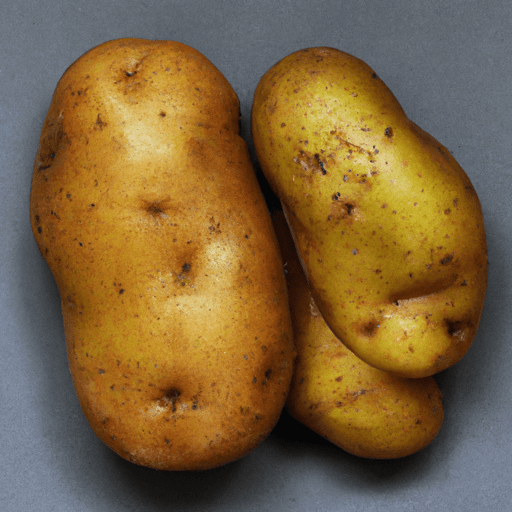The Versatility of Baby Potatoes: A Tiny Delight in Cooking
When it comes to culinary delights, one ingredient that often steals the spotlight is the humble potato. Known for its versatility, the potato comes in various shapes and sizes, each offering a unique culinary experience. In this blog post, we’ll explore the world of baby potatoes – small, tender, and mighty in flavor.
Tiny in Size, Immense in Taste
Baby potatoes are a miniature version of their mature counterparts, offering concentrated flavor in a small package. Their thin, delicate skin wraps around a creamy, buttery flesh, enticing both the palate and the eye. Their texture is smooth, ensuring a melt-in-your-mouth experience with every bite.
Culinary Creativity- Unleashed!
Despite their diminutive size, baby potatoes pack a flavorful punch that adds depth to any dish. Their small shape makes them ideal for a wide range of cooking methods, including boiling, roasting, baking, and even grilling. Whether served whole or halved, these petite potatoes hold their shape well, making them perfect for salads or as a side dish.
Common Uses in Cooking
- Roasted: Tossed with olive oil, herbs, and seasonings, roasted baby potatoes become crispy on the outside while retaining their soft interior.
- Boiled: When boiled, baby potatoes can be used in potato salads, stews, or simply enjoyed with a drizzle of butter and a sprinkle of salt.
- Mashed: Their small size makes for quick and easy mashing, resulting in creamy, flavorful mashed potatoes.
- Grilled: Threaded onto skewers or wrapped in foil, baby potatoes turn into a delightful accompaniment to grilled meats and vegetables.
- Sauteed: Pan-fried until golden, sautéed baby potatoes pair beautifully with fresh herbs and spices.
Nutrient Powerhouses in Each Bite
As we savor the delightful taste of baby potatoes, let’s not forget the nutritional benefits they bring to the table. These petite powerhouses are low in calories, cholesterol-free, and boast a good amount of dietary fiber. They are also a great source of potassium, vitamin C, and vitamin B6.
A Historical Journey
Potatoes have an intriguing history, originating from the Andes region in South America. Baby potatoes, in particular, have been enjoyed for centuries, with records of their consumption dating back to ancient Incan civilizations. Today, baby potatoes continue to grace our plates, offering a taste that takes us on a culinary journey through time.
Fun Facts About Baby Potatoes
- Baby potatoes are harvested before reaching full maturity, typically around two inches in diameter.
- The term “baby” refers to the size of the potato, not its age.
- Some popular varieties of baby potatoes include fingerlings, new potatoes, and red potatoes.
- Baby potatoes are often sold with their thin skin intact, which not only adds visual appeal but also provides additional nutrients and fiber.
Conclusion
As we explored the world of baby potatoes, it’s evident they are not just ordinary spuds. Their small size, delightful flavor, and versatility make them a culinary delight. Whether roasted, boiled, or used in various other cooking methods, baby potatoes add a touch of elegance to any meal. So, embrace the charm of these tiny delights and let your creativity flourish in the kitchen!
Origin: Baby potatoes are small, fully grown potatoes that are harvested early, typically about 2-3 months after planting. They are not a specific variety but rather any small potato variety that is harvested early.
Common Uses: Baby potatoes are versatile and can be used in various culinary preparations. They are often boiled, roasted, mashed, or used in salads, stews, and soups. Because of their small size, they cook quickly and have a tender texture that makes them great for dishes where you want whole potatoes.
Nutritional Benefits: Baby potatoes offer several nutritional benefits. They are a good source of dietary fiber, which aids digestion and helps maintain bowel regularity. They also provide essential vitamins and minerals, including vitamin C, potassium, and vitamin B6. Additionally, they are a low-calorie food option.
Unique Properties: Baby potatoes have a thin and delicate skin that does not need to be peeled, which makes them convenient to cook with. This thin skin also contributes to their tender texture and buttery flavor. Unlike larger potatoes, baby potatoes have a higher moisture content, which gives them a creamier texture when cooked.
Historical Significance: Potatoes have a rich history and have been cultivated for thousands of years. They were domesticated in the Andes Mountains of Peru and Bolivia around 7,000-10,000 years ago. The Spaniards introduced potatoes to Europe in the late 16th century, and they eventually spread to other regions of the world through trade and exploration. Potatoes have played a significant role as a staple food in many cultures and have contributed to the development of cuisines worldwide. However, baby potatoes specifically do not have a distinctive historical significance compared to other potato varieties.




Use the share button below if you liked it.
It makes me smile, when I see it.